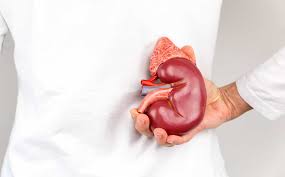Article
What Comes Next For Patients With Kidney Cancer
Author(s):
Kidney cancer positives that might come from this pandemic.
During these challenging days, I’ve been searching for any possible positives that might come out of this healthcare crisis we’re in together. Here are a few:

1. Possibly we will learn that less immunotherapy (fewer doses) will be equally effective as the doses that were originally tested and approved. For years there have been whispers in the hallways that we may not need as much drug…. maybe, just maybe, we will look back on 2020 real-world patient outcomes and learn that we can safely space out those infusions, give other patients a treatment break, and resume later. Potentially that might lead to fewer immune-related side effects — and of course lower costs to our healthcare systems and patients themselves.
2. Possibly the global pandemic has been the impetus needed to stop surgeons operating on the smallest renal tumors seen on imaging — without further investigation. We know that many of these small tumors are non-cancerous (20%), and many will never develop metastasis. So possibly the data coming out of 2020 will prove that the rush to surgery can instead be replaced with a fulsome discussion of ‘when and if to operate’… in some months or longer, that this is not a medical emergency (for renal tumors under <4 cm).
3. Sequencing. Around the world we are going to see some changes in how the drugs are sequenced — and in many countries we will be collecting patient outcomes (real world data) that will inform us all. For example, a patient with favorable risk disease (IMDC criteria) might be recommended to start on a TKI, with the intent of moving the immunotherapy to the 2nd or 3rd line. (In Canada, for example, Kidney Cancer Canada is working with our provinces to ensure that ipi-nivo (for example) could be offered post-TKI for those patients who are choosing to avoid hospitals/infusions during the pandemic.) Patients with Intermediate or Poor Risk disease features (IMDC) will likely start on VEGF+IO (e.g., pembro+axi) which has less of a risk of immune-related toxicities that may require hospitalization. So, the pandemic is changing sequencing, and we will all learn from that.
4. Imaging. Maybe we’ll learn that for many patients (not all), we can push out the imaging recommendations and reduce the number of scans under certain circumstances. A lot of us can safely push out our scans a month or two without too much risk. (What’s the difference (long-term) between a scan every 4 months vs every 6 months?) There is risk of course, but in the metastatic setting, is that a reasonable risk/benefit trade off? I guess we’ll learn!
So, there are my potential positives. Do you see others?
Deb Maskens is a patient living with metastatic kidney cancer and is a member of the KCA’s Patient and Caregiver Advisory Council and serves as a Patient Advocate on the NCI Renal Task Force. This blog post represents personal views.




